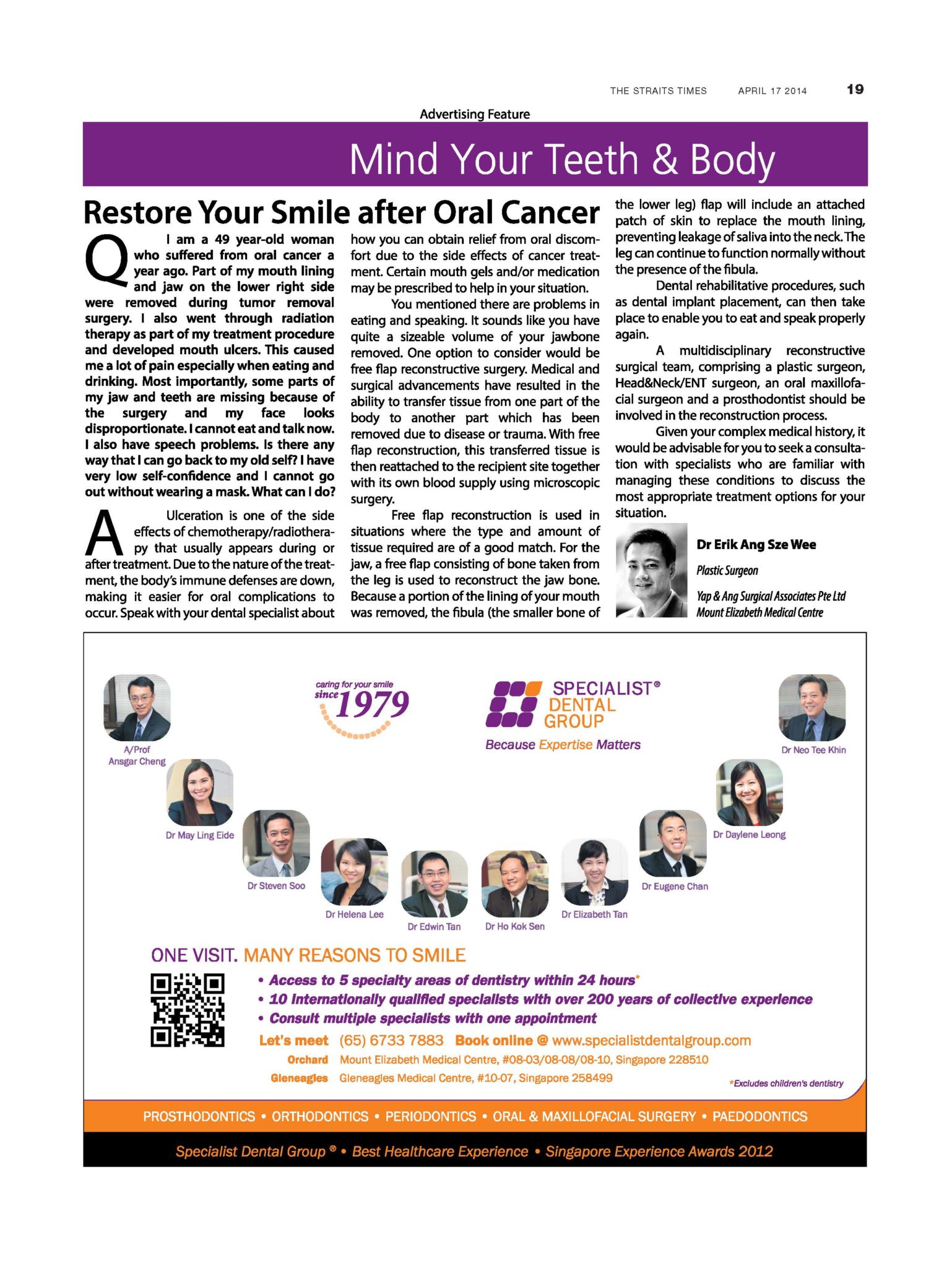 This article first appeared in the April 17th, 2014 issue of The Straits Times Mind Your Body. We have reproduced it for the information of those of you who missed it when it was published.
This article first appeared in the April 17th, 2014 issue of The Straits Times Mind Your Body. We have reproduced it for the information of those of you who missed it when it was published.
Q. I am a 49 year-old woman who suffered from oral cancer a year ago. Part of my mouth lining and jaw on the lower right side were removed during tumor removal surgery. I also went through radiation therapy as part of my treatment procedure and developed mouth ulcers. This caused me a lot of pain especially when eating and drinking. Most importantly, some parts of my jaw and teeth are missing because of the surgery and my face looks disproportionate. I cannot eat and talk now. I also have speech problems. Is there any way that I can go back to my old self? I have very low self-confidence and I cannot go out without wearing a mask. What can I do?
A. Ulceration is one of the major side effects of chemotherapy/radiotherapy that usually appears during or after treatment. Due to the nature of the treatment, the body’s immune defenses are down, making it easier for oral complications to occur. Speak with your dental specialist about how you can obtain relief from oral discomfort due to the side effects of cancer treatment. Certain mouth gels and/or medication may be prescribed to help in your situation.
You mentioned there are problems in eating and speaking. It sounds like you have quite a sizeable volume of your jawbone removed. One option to consider would be free flap reconstructive surgery. Medical and surgical advancements have resulted in the ability to transfer tissue from one part of the body to another part which has been removed due to disease or trauma. With free flap reconstruction, this transferred tissue is then reattachedto the recipient site together with its own blood supply using microscopic surgery.
Free flap reconstruction is used in situations where the type and amount of tissue required are of a good match. For the jaw, a free flap consisting of bone taken from the leg is used to reconstruct the jaw bone. Because a portion of the lining of your mouth was removed, the fibula (the smaller bone of the lower leg) flap will include an attached patch of skin to replace the mouth lining, preventing leakage of saliva into the neck. The leg can continue to function normally without the presence of the fibula.
Dental rehabilitative procedures, such as dental implant placement, can then take place to enable you to eat and speak properly again.
A multidisciplinary reconstructive surgical team, comprising a plastic surgeon, Head&Neck/ENT surgeon, an oral maxillofacial surgeon and a prosthodontist should be involved in the reconstruction process.
Given your complex medical history, it would be advisable for you to seek a consultation with specialists who are familiar with managing these conditions to discuss the most appropriate treatment options for your situation.
Source:The Straits Times © Singapore Press Holdings Limited. Reproduced with permission





